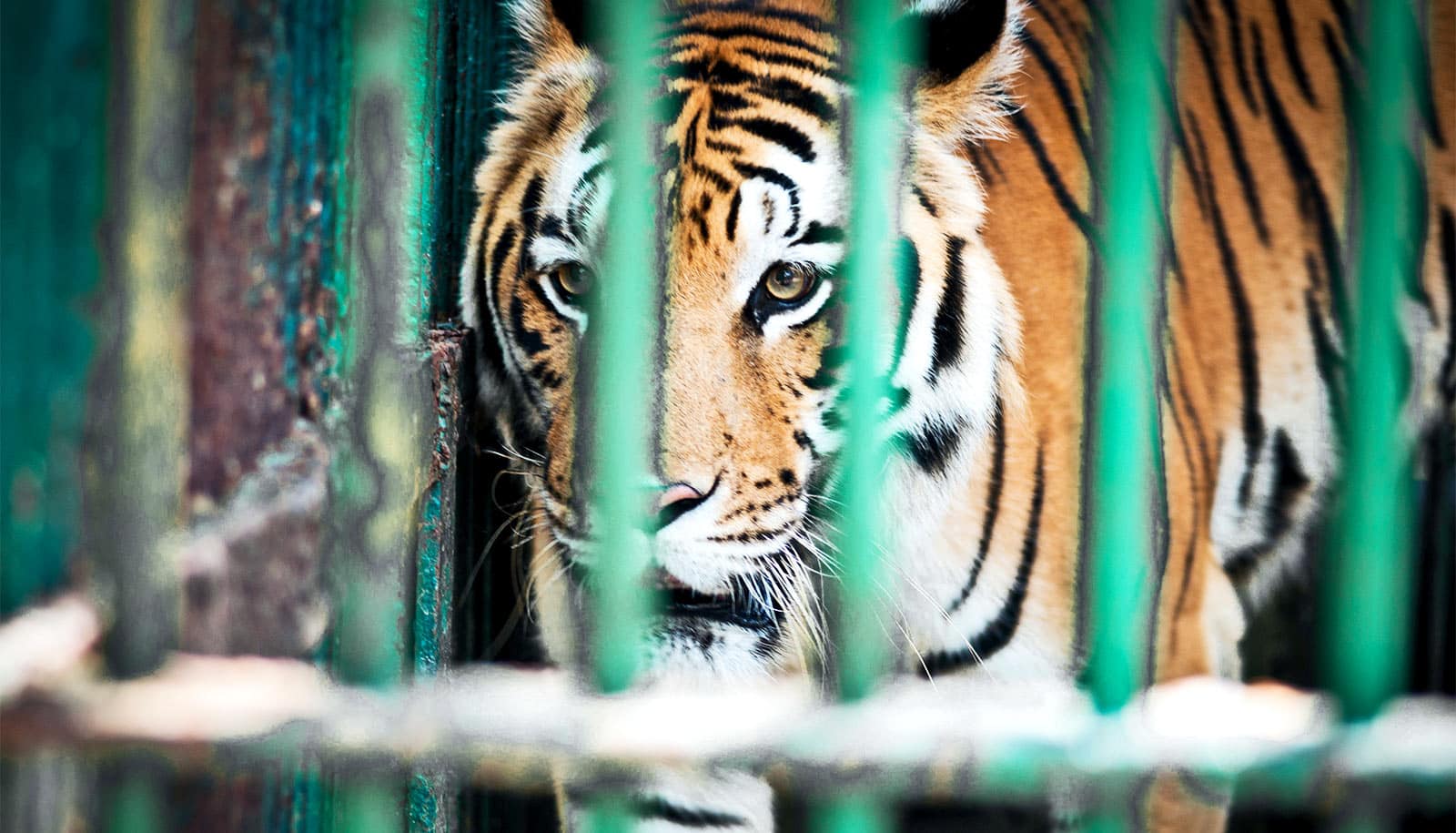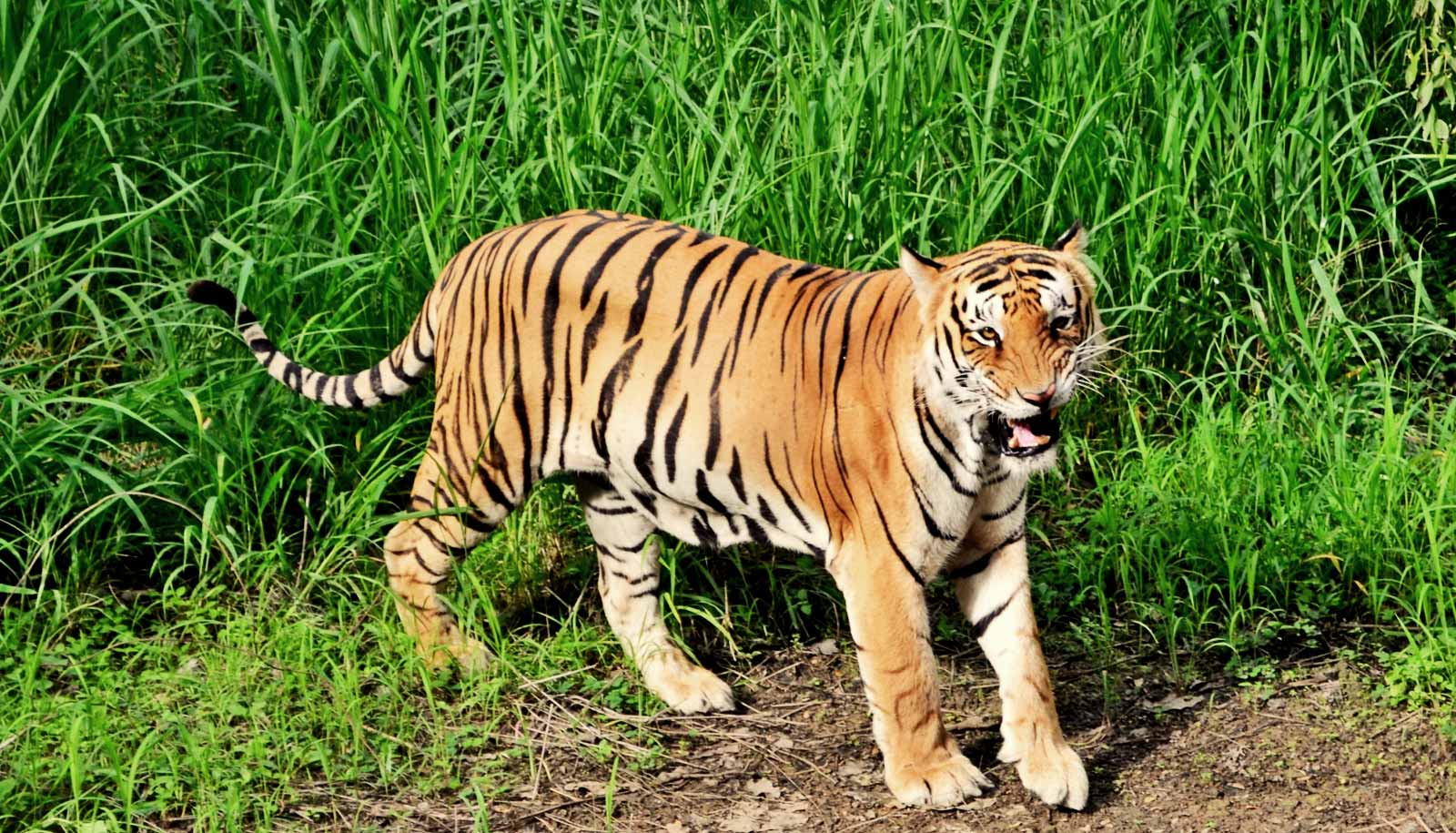The Netflix series Tiger King provides an opportunity to educate viewers who want to learn more about tigers in captivity and the wild, biologists argue.
Love it or hate it, Tiger King is a phenomenon that has brought unprecedented attention to the fate of captive tigers. The series, which more than 60 million households watched, tells a sordid tale against the backdrop of private zoos and sanctuaries that house big cats.
Elizabeth Hadly, professor in environmental biology at Stanford University, and Ellie Armstrong, a PhD student in Hadly’s lab, have done extensive genetic research on wild and captive tigers.
Here, they discuss the problems with private ownership of tigers, pending legislation to curb the practice, how captive tigers can contribute to conservation of wild tigers, and more:
What might the average person, including fans of Tiger King, be surprised to know about captive tigers in the US and around the world?
Armstrong: I think the most surprising aspect is that “tiger farming” or mass breeding, which has mostly been alleged to occur outside of the US is occurring here as well. This is what results in such a high number of captive cats—estimated at more than 7,000—within our borders. This impedes our ability to conserve wild species because when we try to tell other countries what they should do with their captive cats, we look like hypocrites. It also impedes our ability to influence the rules and regulations that are developed globally to protect wildlife.
Hadly: In spite of the conservation messages that they tout, very few private tiger facilities in the US actively contribute to the restoration or conservation of wild animals. Breeding—and then rearing—an animal to adulthood in a facility that has few of the environmental conditions of their native range means that viable reintroductions have low chances of success. Indeed, the purpose of these facilities is primarily to make money for the owners of the animals—not for conservation of the species.
What does the state of tiger populations and captive breeding mean for genetic diversity and related issues?
Armstrong: Our upcoming work aims to answer that question. We have sequenced over 100 genomes of captive cats, many of whom were rescued from private facilities that purchased them from the likes of Joe Exotic. We are using this data to investigate how diversity is partitioned across the cats. We also included public zoo tigers to look at how these populations are structured.
Hadly: Genetic diversity is an important part of the long-term survival of species. However, diversity is a complicated metric alone. How the diversity is distributed within and among populations of tigers is critical, and whether the particular genotypes are selected for particular environments is also important. We are just beginning to scratch the surface of this question for tigers in the wild and in captivity.
What should be done with captive tigers? Can they contribute to conservation in the wild?
Armstrong: I think from an animal welfare perspective, we should aim to shut down facilities that are still breeding, and allow the remaining animals to live out their lives in dignity.
Captive populations present an excellent opportunity to study animals that we would not otherwise have. I think they can contribute to conservation through basic research and possibly through genetic reserves. The San Diego Zoo has a reserve that has been biobanking samples from endangered species with the goal to preserve our knowledge of diversity. We can then use that data to understand how humans have impacted diversity, or for more ambitious projects such as creating stem cells to try and support the near-extinct northern white rhino population.
Hadly: The first thing to note is that none of these animals ever return to the wild. Some lineages of tigers in the US have been out of the wild for nearly a century. There are so many issues to consider when re-integrating a captive animal with their wild cousins. These animals have none of the behaviors that are key to survival in the wild, they have not been exposed to their native prey, have not learned to hunt or find mates, and—quite the contrary—they may even have been selected by breeders to be more docile, less picky about food, and more tolerant of cages, concrete, and people.
Even if we were to surmount these challenges and successfully “teach” these animals how to survive in the wild, we are severely limited by the remaining wild areas in Asia that could house tigers—less than 7% of their historic range. The rest is filled with humans, or has been converted to grow our food.
What might Tiger King fans be surprised to learn about Joe Exotic and his Greater Wynnewood Exotic Animal Park in Oklahoma or his nemesis, Carole Baskin, of Big Cat Rescue in Florida?
Armstrong: Well, I guess the first is that Tiger King is extremely misleading. Carole runs an excellent facility which is certified both by the Global Federation of Animal Sanctuaries and the organization we work with, Tigers in America. Her animals have very large enclosures and receive top of the line vet care.
Also, the show is missing history. Ten years ago, even accredited zoos and sanctuaries were doing things that we would gawk at today, such as going in for direct contact with the cats. Joe Exotic and others have refused to adopt what we now consider to be safe standards—such as no contact and no breeding, large enclosures, home for life.
The “Big Cat Public Safety Act” would ban the private ownership of numerous large feline species such as lions, tigers, and jaguars and restrict practices such as cub petting. Why has it languished in Congress for years?
Armstrong: Some very powerful entities have lobbied against many of these proposed changes. This includes all the old circus powers. What they wanted to do with their cats directly opposed the measures in this act. The second is the argument that it impedes small business owners, which has been the argument made by a number of individuals at the local level. Also, agriculture has a stake in this as it can be viewed as a slippery slope. If you can’t breed exotics privately, what will get regulated next? Sheep? Cows? Pigs?
We are hopeful that the bill will pass, as the focus has shifted from strong regulations against private ownership to handling. We hope that this will restrict income through cub petting to many of these facilities and thus decrease the ownership in general. We took a big step this year and the bill has garnered increased support from both parties in addition to getting an okay from the Congressional Budget Office. We are now waiting for it to be scheduled for hearings on the floor of House of Representatives.
Why is it okay for public zoos to keep tigers, but not private facilities?
Armstrong: The best explanation for this is that the breeding in these facilities deals solely with pedigreed pure-bred, meaning pure subspecies. This breeding is highly regulated. However, I think that given developments in molecular tools and modeling it would be worth reconsidering how we approach captive breeding and whether small zoo populations of large predators are useful genetic reserves for their wild counterparts.
Hadly: American Zoological Association-sanctioned facilities are governed by a set of rules for breeding of animals in their care. They keep copious, careful notes of the pedigrees of their animals when breeding them, and they try to avoid inbreeding or selecting individuals that are in poor health. The association also prioritizes the education of the public about wild animal diversity, has been helpful in raising funding for conservation of wild animals and their habitats, and has pioneered breeding and care of rare and endangered animals. Private facilities are less likely to do so.
Source: Stanford University


